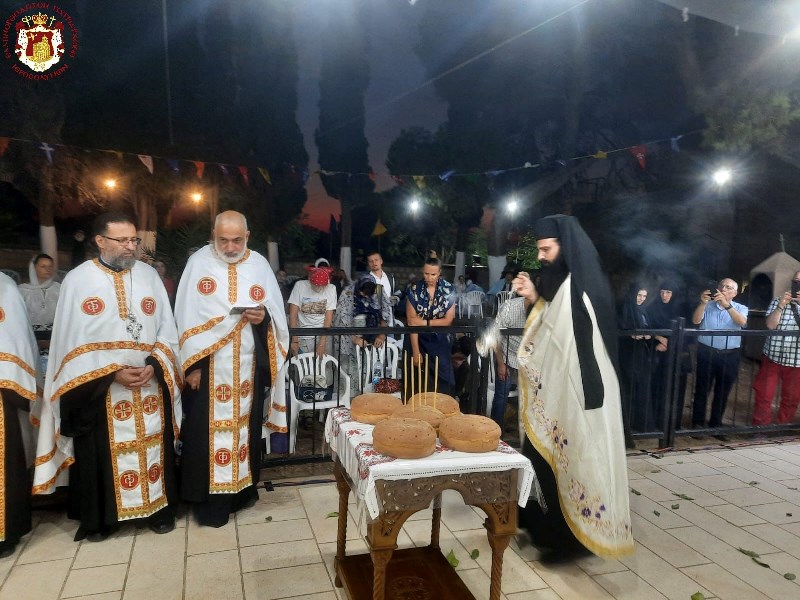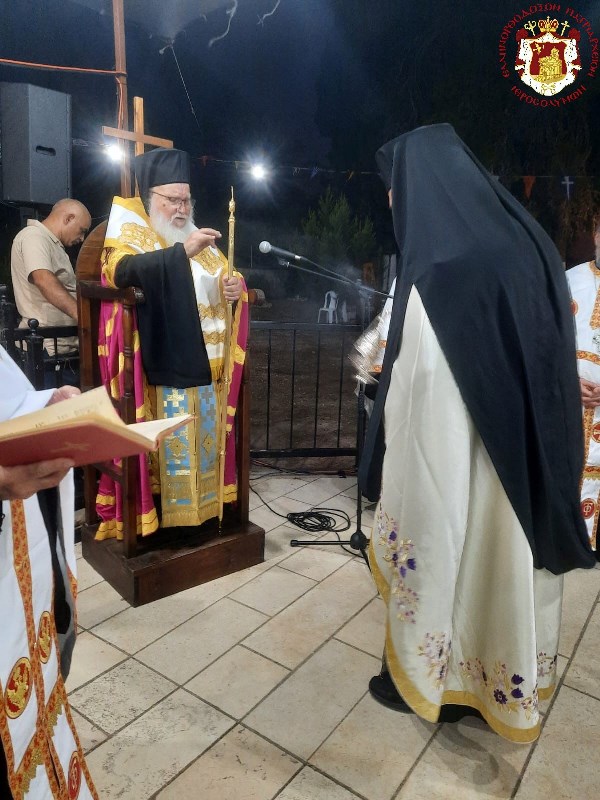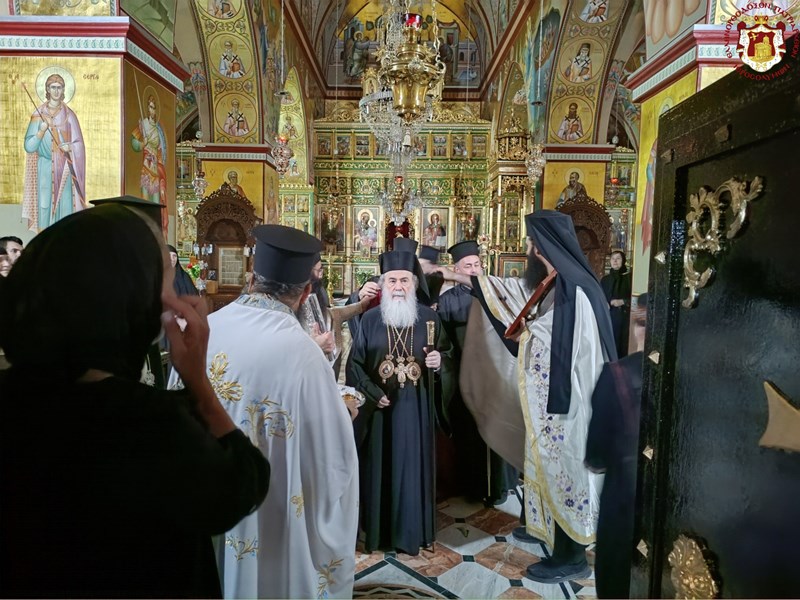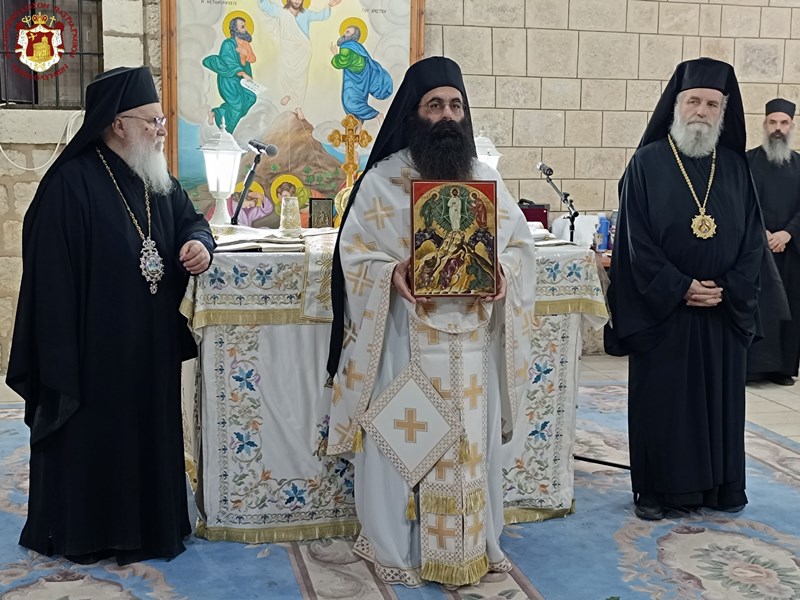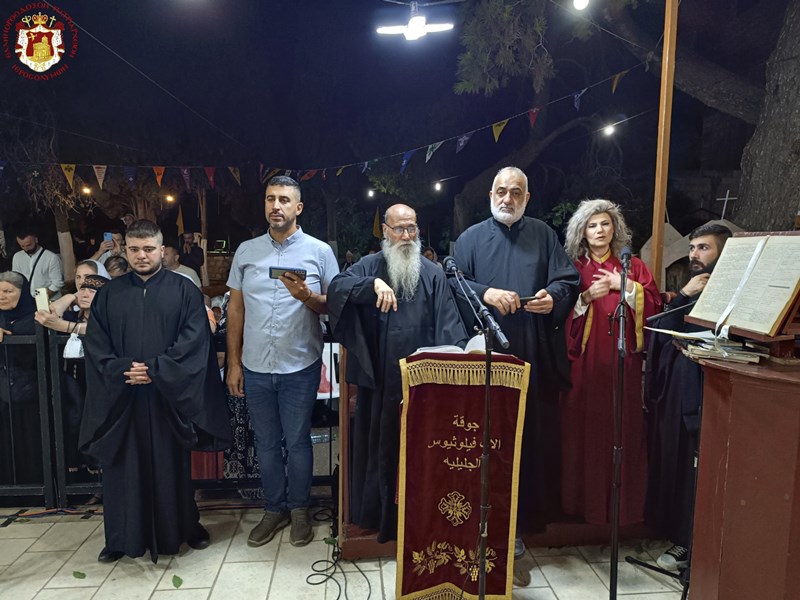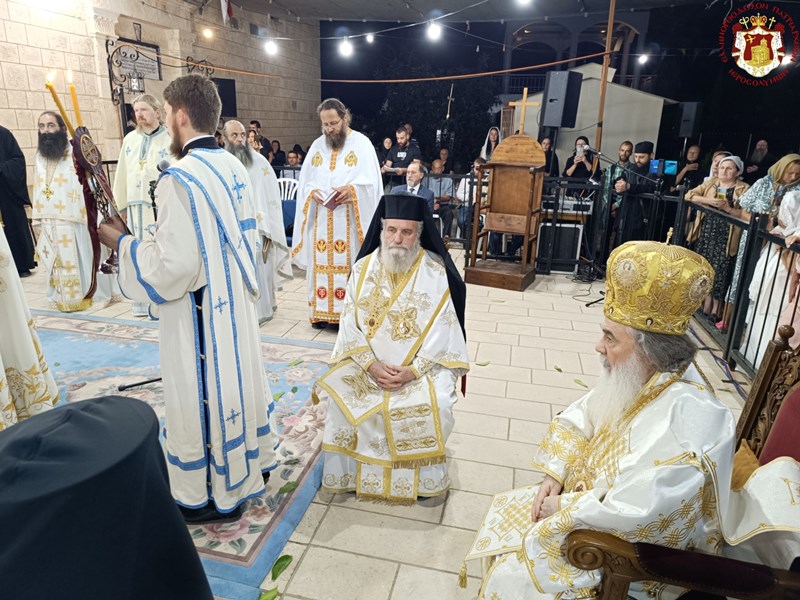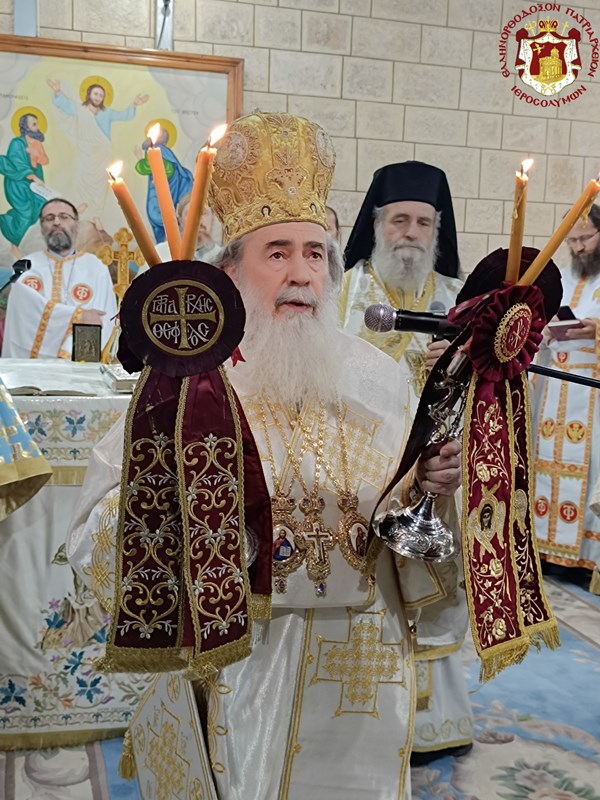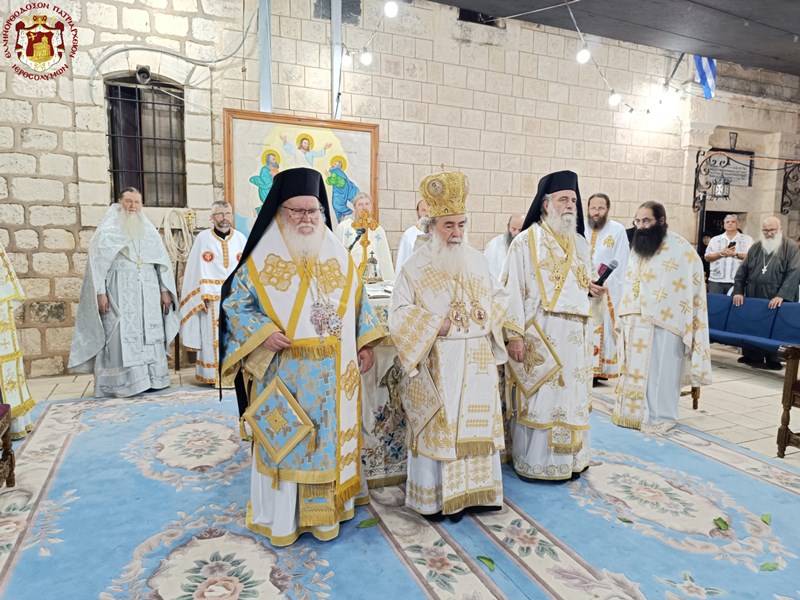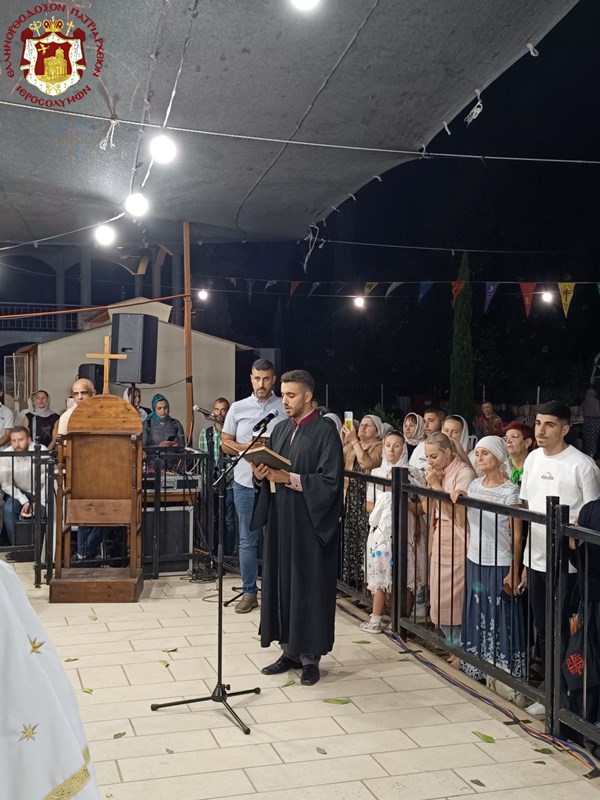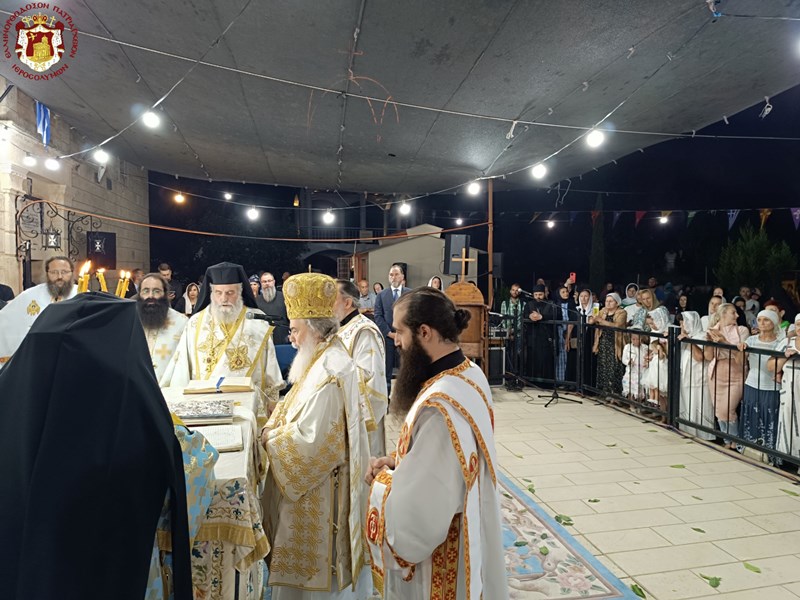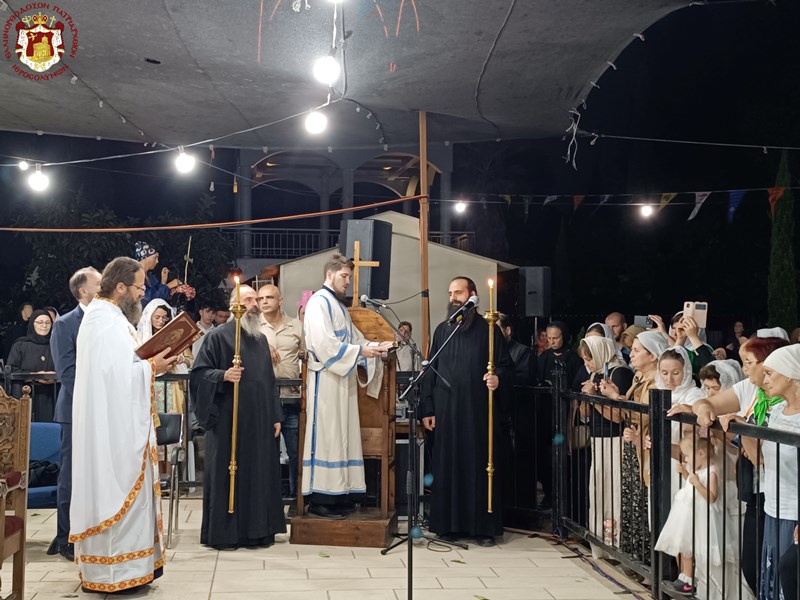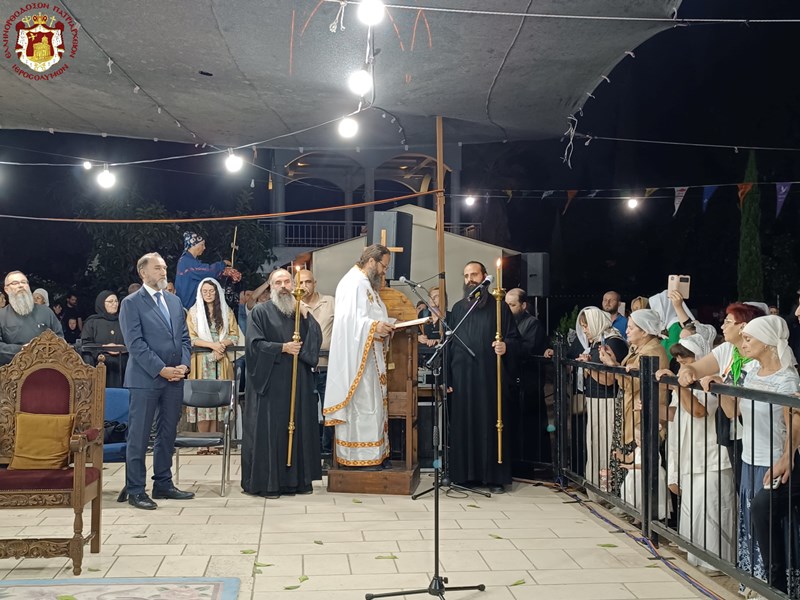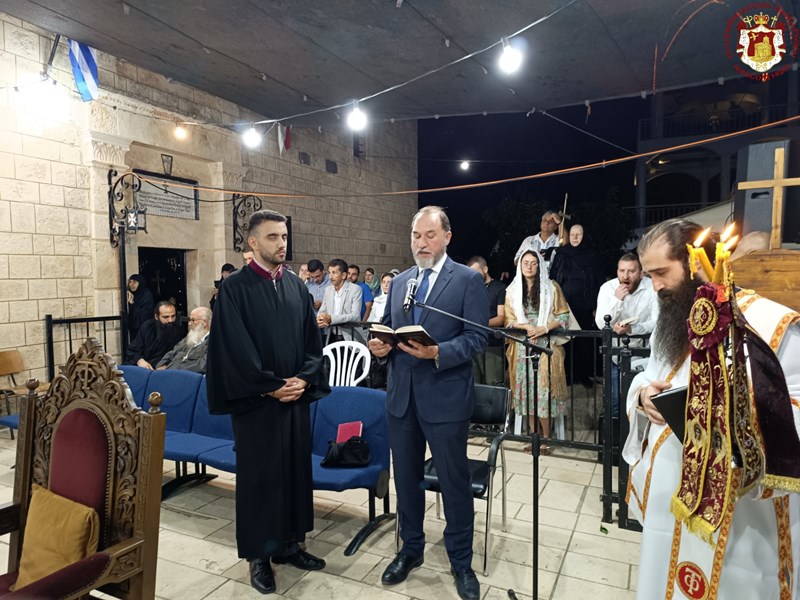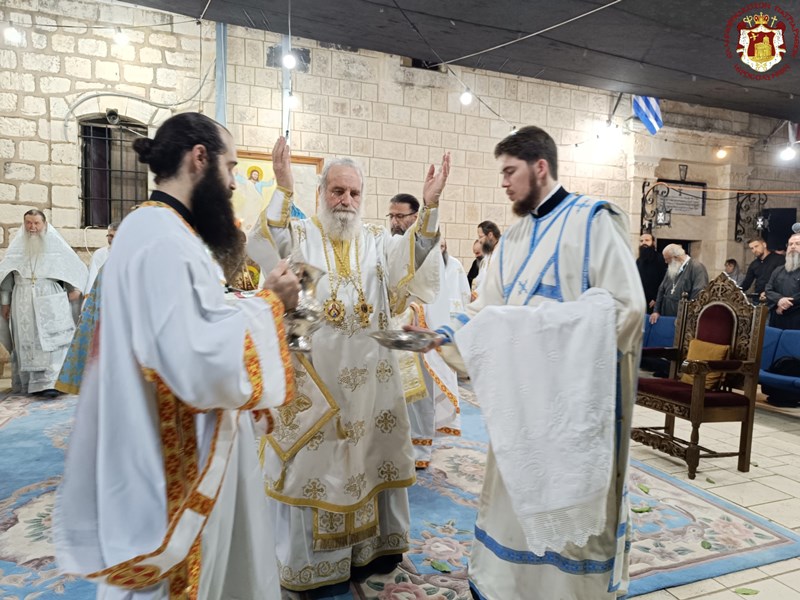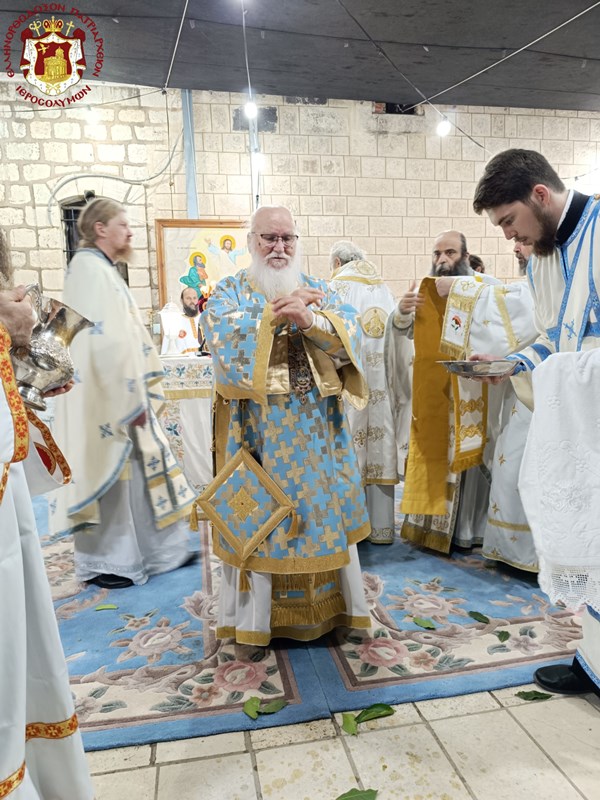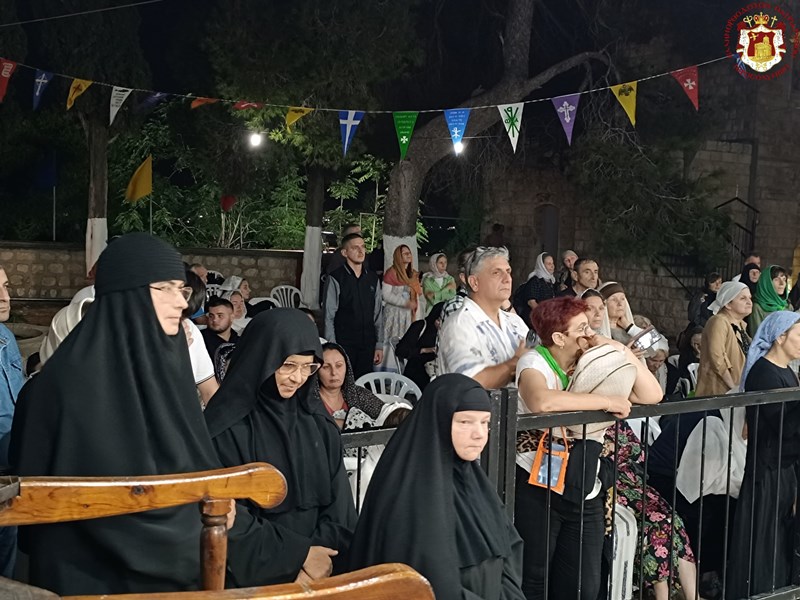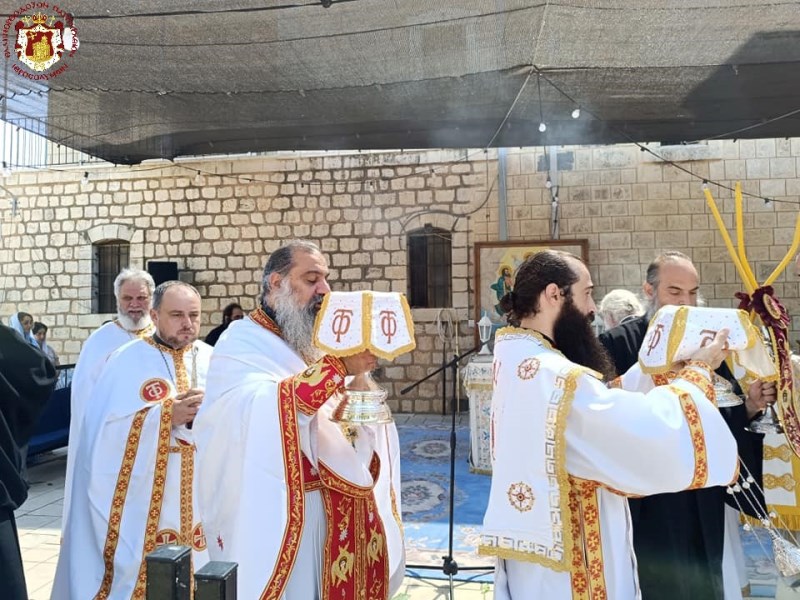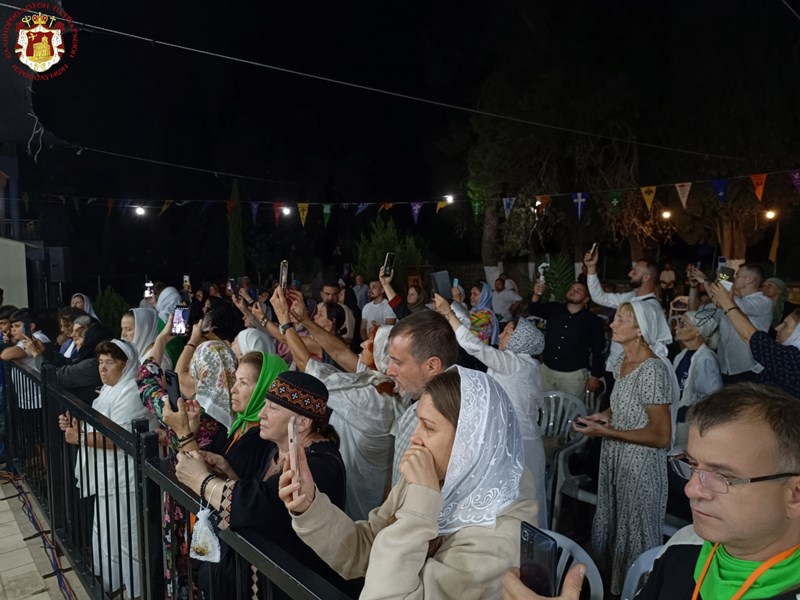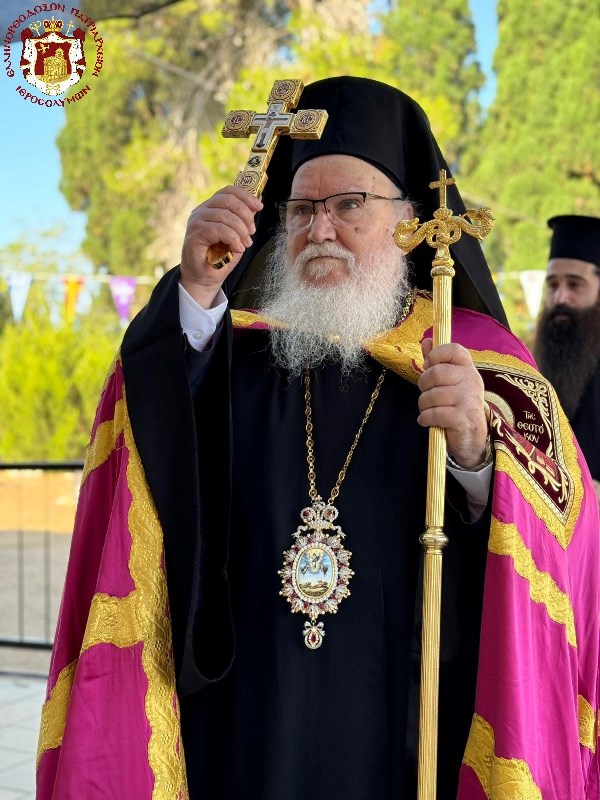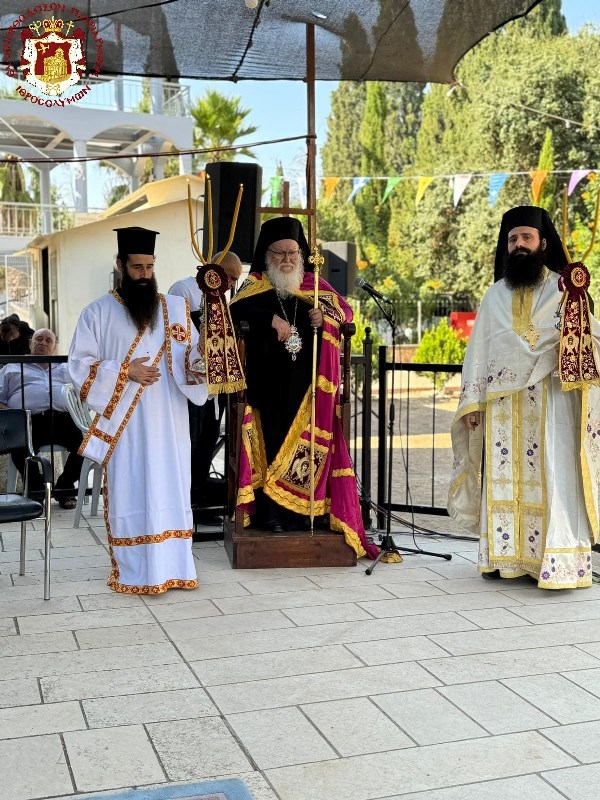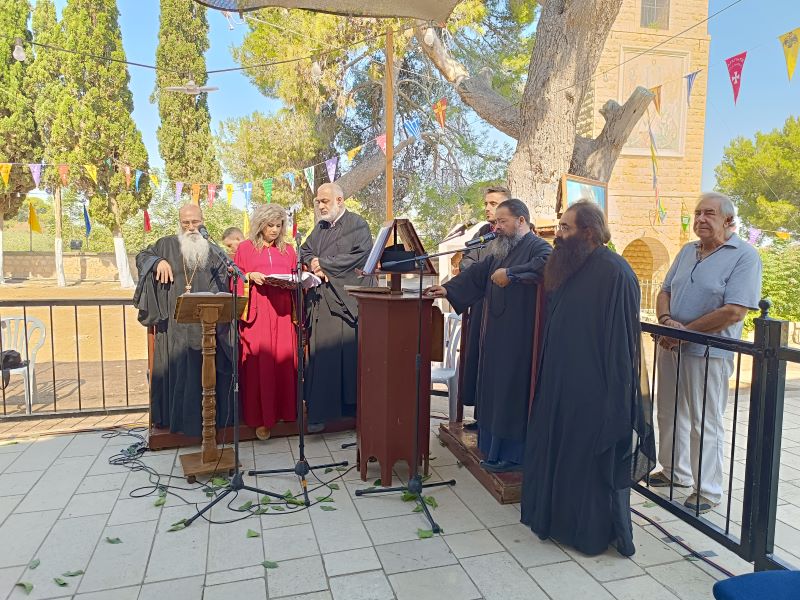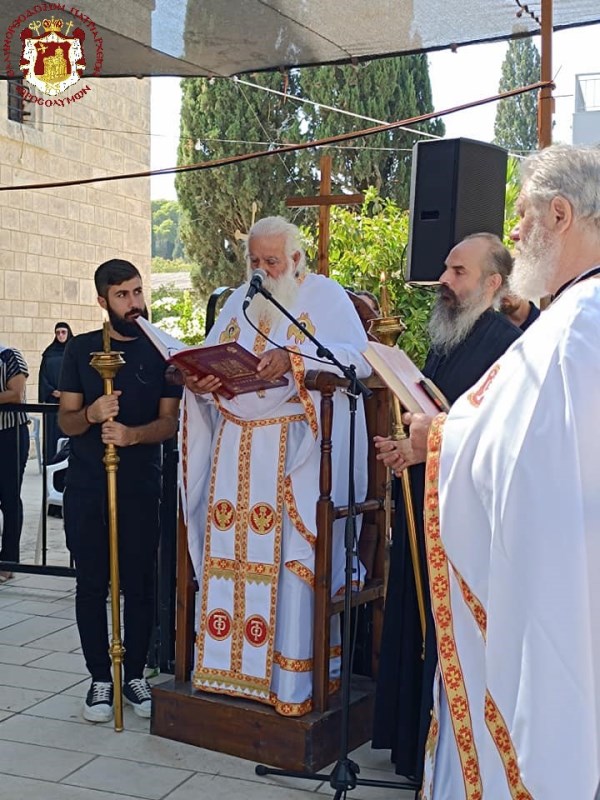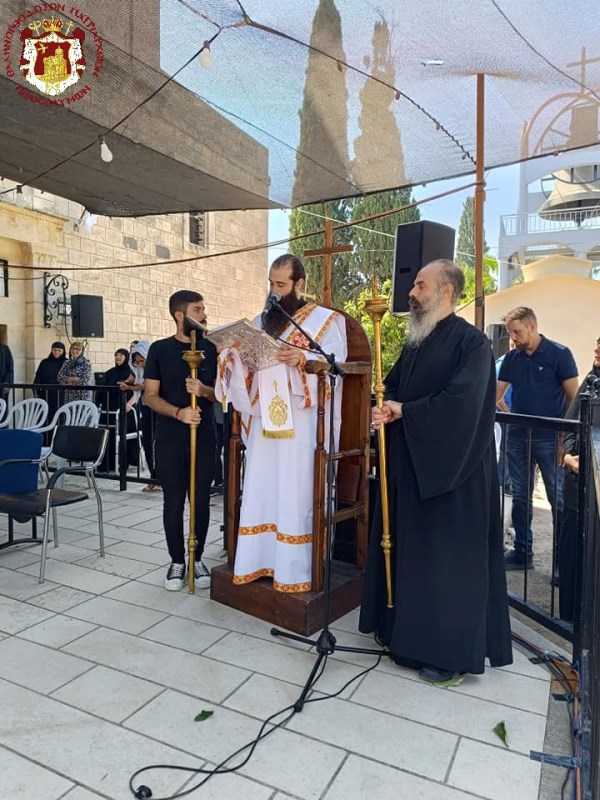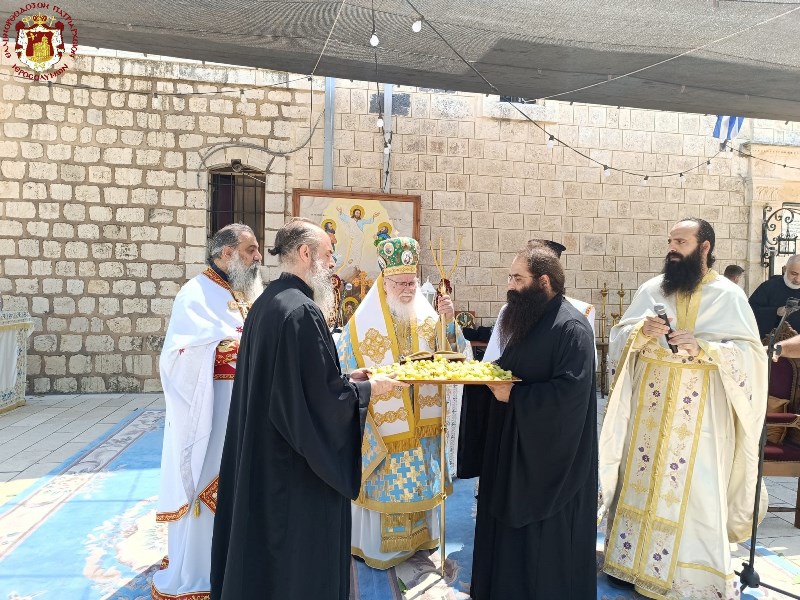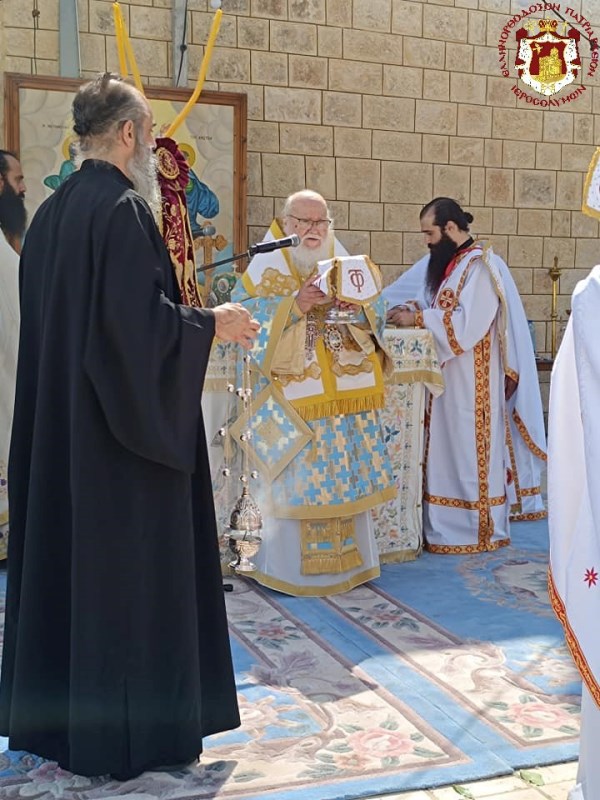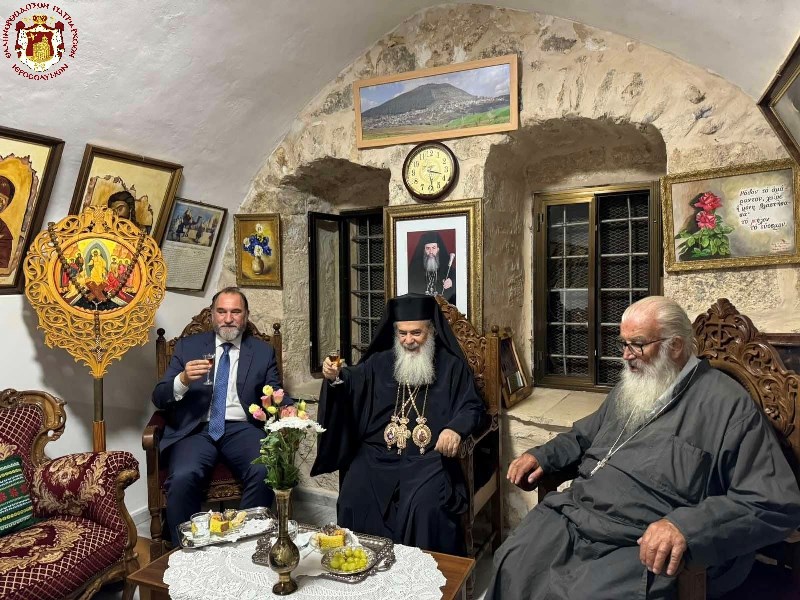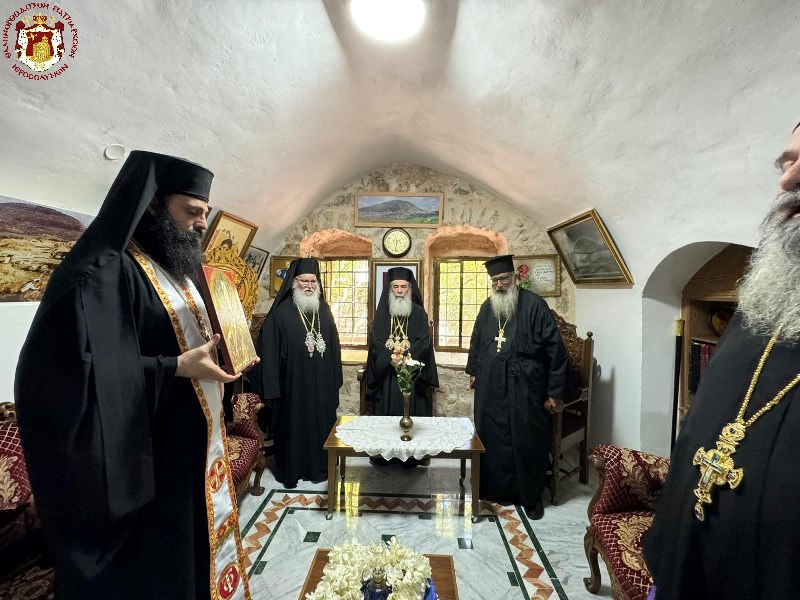The Feast of the Transfiguration of the Lord at the Patriarchate of Jerusalem
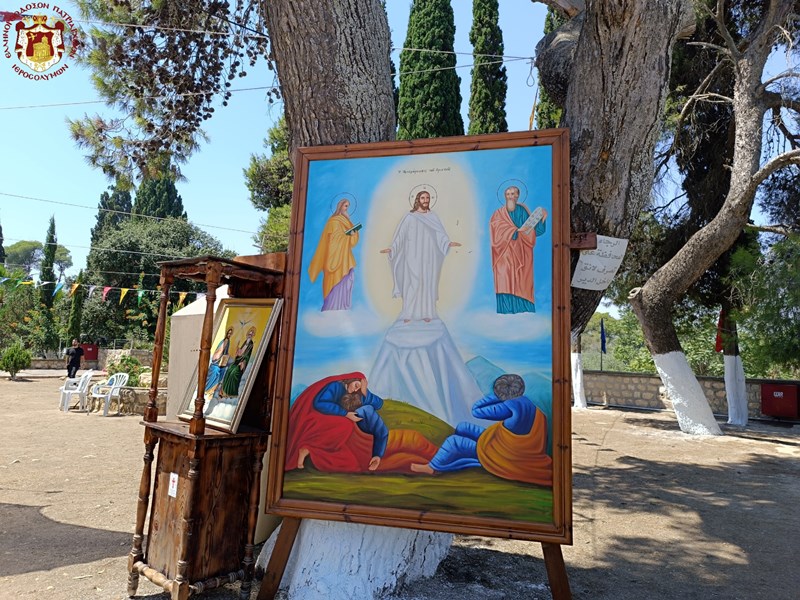

On Monday, August 6/19, 2024, the Feast of the Transfiguration of the Saviour on Mount Tabor was celebrated by the Patriarchate. On this feast, the whole Church, especially the Church of Jerusalem, remembers that our Lord Jesus Christ, before His passion, took His pre-eminent disciples Peter and James and John “to the high mountain and was transfigured before them”.
According to the Evangelists, as well as to the Fathers of the Church, Jesus demonstrated to them the splendor of His divine nature, His face became brighter than the sun and His clothes whiter than the light, and Moses appeared as the representative of the dead, and Elijah as the representative of the living, speaking with Him about His passion, which was about to take place when He would come to Jerusalem. When these things were happening “a bright cloud overshadowed them and a voice was heard from the cloud saying, this is my beloved son, in whom I am well-pleased, hear ye him”.
Jesus revealed this mystery to His disciples so they would be strengthened by the memory of this at the time of His Crucifixion, believing and hoping also in His Resurrection.
The Lord delivered this mystery to remind His disciples and the Church of all the primordial beauty that man had and lost due to the fall and which he can regain by being transformed in Christ.
For this feast an All-night Vigil was held at the Holy Monastery of Mount Tabor, presided over by His Beatitude Patriarch Theophilos of Jerusalem, with con-celebrants their Eminences, Metropolitan Kyriakos of Nazareth, Metropolitan Hesychios of Capitolias, the Hegoumen of the Monastery of the Cross Archimandrite Christodoulos, the Head of MISSIA, Archimandrite Vassianos, Priests from Galilee district, and Russian and Romanian Priests, Archdeacon Mark, and Hierodeacon Dositheos. The chanting was delivered by Father George from the Holy Metropolis of Elia in Greek and by the Acre Byzantine choir in Arabic, in the presence of the Consul General of Greece in Jerusalem Mr. Dimitrios Angelosopoulos.
The participation of the pilgrims was minimal, due to the prohibitive illegal measures of the Israeli Police.
Before Holy Communion, His Beatitude delivered the following Sermon:
“This is my beloved Son”… “Hear ye him”. “The one accepting him accepts me, He who is sent not in a despotic way but in a paternal way. Because as man He is sent, as God, He abides in me and I in Him. He who does not honour my only begotten and beloved Son does not honour the Father, who sent Him. “Hear ye him,” he hath words of eternal life,” Saint John of Damascus preaches.
Beloved brothers and sisters in Christ,
Reverend Christians and pilgrims,
For us, Christ made the feasts “unfortunate for the ungodly” (Isaiah 48:22). For us, Christ ordained the feasts. “Thus I will not allow”, says the Lord, “that the ungodly rejoice”, John of Damascus preaches, invoking the Prophet Isaiah. Therefore, the grace of our Saviour Christ brought us all from the ends of the Universe to this wonderful place of Tabor, so that we could solemnly celebrate the great and miraculous event of His Transfiguration.
The meaning and purpose of the Transfiguration of our Lord Jesus Christ is precisely expressed by the hymnographer: “On the mount Thou wast transfigured and Thy disciples, as much s they could bear, beheld Thy glory, O Christ our God; that when they should see Thee crucified, they would know Thy Passion to be willing, and would preach to the world that Thou in truth art the Effulgence of the Father” (Kontakion).
Listening to the irrefutable testimony of the Evangelists, the psalmist points out three things: First, Christ was transfigured on Mount Tabor, when His disciples saw His glory as much as possible with their spiritual eyes. It should be noted that during the Transfiguration, the human body of Christ did not undergo any change, but was enveloped in a light-like glory. The form of the body remained as it was, the features of the body were more intensely coloured by phototypes of colour, as St. Cyril of Alexandria interprets: “Let’s say that the Transfiguration was done not with the body of a person changing, but by the glory of a phototype surrounding it; the body retained its shape, while the bodily features were coloured by phototypes of colour, adding to its glory”.
And the luminous colour, that is, the brightness of Christ’s face like the sun and the whiteness of His clothes like light (cf. Matt. 17:2), is nothing other than the uncreated and inaccessible divine light, as Paul preaches. “The unapproachable light of [God’s], which no man has seen, nor can he see” (1 Tim. 6:16). And according to the Bible of Exodus “the appearance of the glory of the Lord as a flaming fire” (Exodus 24:17).
Secondly, during the Transfiguration of Christ, two men appeared and conversed with Him, Moses and Elijah, the ones who had risen in glory and spoke about His exodus, which should be accomplished in Jerusalem” (Lk. 9,30). According to Saint Cyril of Alexandria, the subject of the conversation was great, referring to the passion of the cross, the death, the Resurrection and the Ascension of Christ. “Moses and Elijah next to Jesus, heralding His exodus, which should be accomplished in Jerusalem, that is, the mystery of the providence in the flesh and the saving passion on the cross”.
Thirdly, it refers to the cloud and the voice from it saying “This is my beloved son, hear ye him” (Luke 9:35). According to Saint John of Damascus, the cloud, which overshadowed Christ is no other than the divine light, which depicted the radiance of the Holy Spirit, as the Apostle Paul says: “Our fathers were all under the cloud” (I Cor. 10,1).
Explaining the voice of God the Father: “This is my beloved Son, hear ye him”, (Luke 9:35) Saint John says: while Christ Himself maintains the excellence of His divinity, He takes on the lowest value, that is, man, deifying Himself. And the archetype, that is, the Godhead, is mixed with the icon, that is, humanity, and shows in it the special beauty of the divine, as the hymnographer says: “Being perfect God, Thou becamest perfect mortal, mingling manhood with the entire Godhead in Thine own Hypostasis, which Moses and Elijah saw in its two natures on Mount Tabor” (Matins, Ode 3, 2nd Canon, Troparion 3).
In other words, my beloved brothers, the godly and indeed paradoxical events of today’s feast of the holy Transfiguration of our Lord and God and Saviour Christ, which took place on this holy Mount Tabor, are a prelude but also an image and pattern of the future state of the saints and righteous, whose brilliance the Lord declared, saying: “Then the righteous will shine like the sun in the kingdom of their Father” (Matthew 13:43).
And we, who honour this feast, let us beseech the holy disciples and Apostles, so that with the intercessions of the Most Blessed Theotokos and Ever-Virgin Mary, we may merit the illumination of the glory of our Saviour Christ. Amen. Many and peaceful returns”.
On the morning of this day, a Divine Liturgy was celebrated by the Metropolitan Kyriakos of Nazareth, with only a few Priests concelebrating and a small group of pilgrims and Arabic-speaking believers participating, due to the prohibitive measures of the Police.
At noon of the same day, the renovator of the Holy Monastery, Hegoumen Archimandrite Hilarion hosted a meal with fish as the main course for His Beatitude and His Entourage.
From the General Secretariat
Source: Patriarchate of Jerusalem
